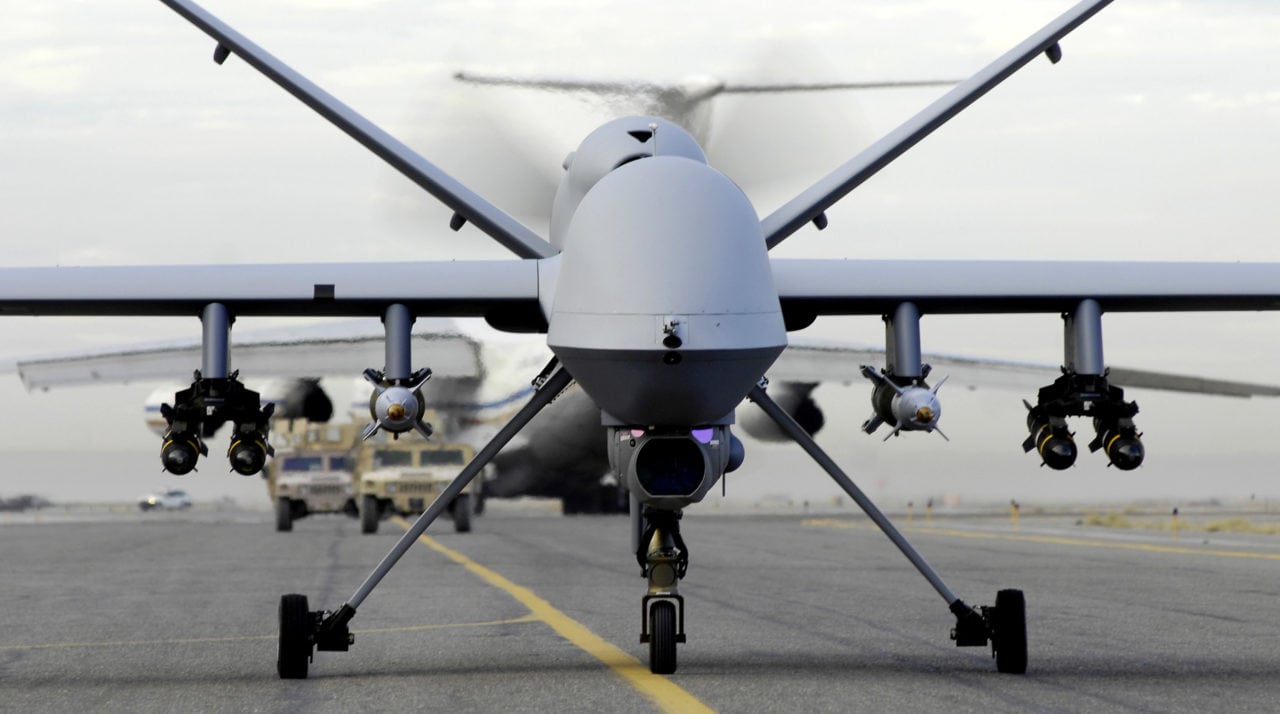
An MQ-9 Reaper drone by General Atomics. Photo courtesy of the U.S. Air Force
The White House is implementing a new set of arms transfer policies focused on allowing direct sales between U.S. companies and foreign governments, which will expand the defense industrial base and, in particular, facilitate the sale of drones to foreign buyers.
The U.S. presidential administration announced new reforms Thursday to the Conventional Arms Transfer (CAT) policy looking to accelerate the pace of completing arms deals to better compete with foreign competitors, including China and Russia.
“The fact is our allies and partners want to buy American. They know American industries produce the most technologically sophisticated, accurate, and effective defense systems in the world. When we enable our allies and partners to more easily obtain appropriate American defense articles and services, we improve our national security,” Peter Navarro, head of the White House National Trade Council, said during a call with reporters.
Navarro said the new rules lay out a broad strategy for placing greater consideration of economic benefits when pursuing weapons deals with partner nations.
The new policy comes a day after President Trump, during a joint press conference with Japanese Prime Minister Shinzo Abe, signaled a need to create a simpler path for the defense industry to complete foreign weapons deals.
“For too long we have hamstrung ourselves and limited our ability to provide our allies and partners with the defensive capabilities they require, even when in the U.S. interest,” Navarro said.
The new policy gives the executive branch more oversight in streamlining procedures, clarifying regulations, increasing contracting flexibility, and playing a larger role in establishing bases for future contracts.
Tina Kaidanow, principal deputy assistant secretary for the State Department’s bureau of political-military affairs, said the new policy is aimed at facilitating foreign military sales “more strategically.”
“We need to do, as the U.S. Government, a better job of strategic advocacy for some of our companies,” Kaidanow said during the Thursday call with reporters.
Perhaps the most significant change to the CAT policy is the ability to make direct commercial sales of drones and the elimination of a laser designation for UAS technologies that reduced the number of sales.
Previous policies classified strike-enabled UAS with laser target designators as an “armed” UAS, meaning they faced higher scrutiny during the foreign military sale process. The new policy treats laser designated drones as “unarmed.”
“What it does is it allows them effectively to sell you UAS with laser target designators via direct commercial sale, which can potentially allow for faster procurement by those countries,” Kaidanow said.
Fewer limits to UAS sales will allow companies to better compete with China and Russia, which have started to sell their own replications of U.S. technology, according to Navarro.
“In June, at the Paris Air Show, China’s Chengdu Aircraft Group featured its Wing Loong II medium-altitude, long-endurance UAS, a clear knockoff of General Atomics Reaper,” Navarro said. “Bottom line, the policies of the previous administration enabled that, and this administration, consistent with its national security strategy and national defense strategy, is changing that policy.”
The Obama administration implemented similar policy reforms aimed at loosening restrictions on UAS sales, but Kaidanow and Navarro believe this new effort brings in more industry consideration.
To read the rest of this article, visit sister publication Defense Daily.